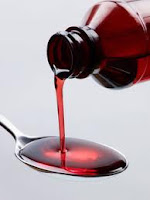When my kids get a cold, I don't give them cold medicine either -- especially if it has red #40 in it! No way!
Ran across a great post about OTC medicines and such -- over at The Autism File:
"The FDA recommends that parents and caregivers check the active ingredients on the product label. Parents and caregivers should also check the inactive ingredients on the label, as both may affect the well-being of a person with ADD, ADHD, or ASD.
Inactive ingredients such as preservatives, dyes, and other excipients can cause allergic reactions, such as rash, exacerbation of asthma symptoms, anaphylaxis, hyperactivity, and, in some cases, upset stomach and diarrhea.■First, you can ask your pharmacist to look at the package insert. Under the title “description” at the very top of the insert, there is a list of all the ingredients in a manufactured product.
■Second, check a Physicians’ Desk Reference (PDR). The PDR is a compilation of package inserts printed as a book. Most libraries and large book stores have a copy of the PDR. Unfortunately, only the most current high volume prescription drugs are in the book.
■Third, you can look online. Find the official website of the prescription drug you are checking on. Click on “health care professional” and then go to the prescribing information section, which will bring up a copy of the package insert. The first item listed is the description, and the inactive ingredients are listed there."
You can link over to the whole article here. She has a couple of great tables highlighting many of the ingredients that we avoid - including sodium benzoates and the effects of such on those with special needs. I also personally think that hand washing does an amazing job of ridding germs and assists in fighting off colds too.













Our 14-year-old has his first fever of the season. We're treating him with essential oils, chicken noodle soup, and rest. He seems to be on the mend. Hope you get over your cold soon!
ReplyDelete